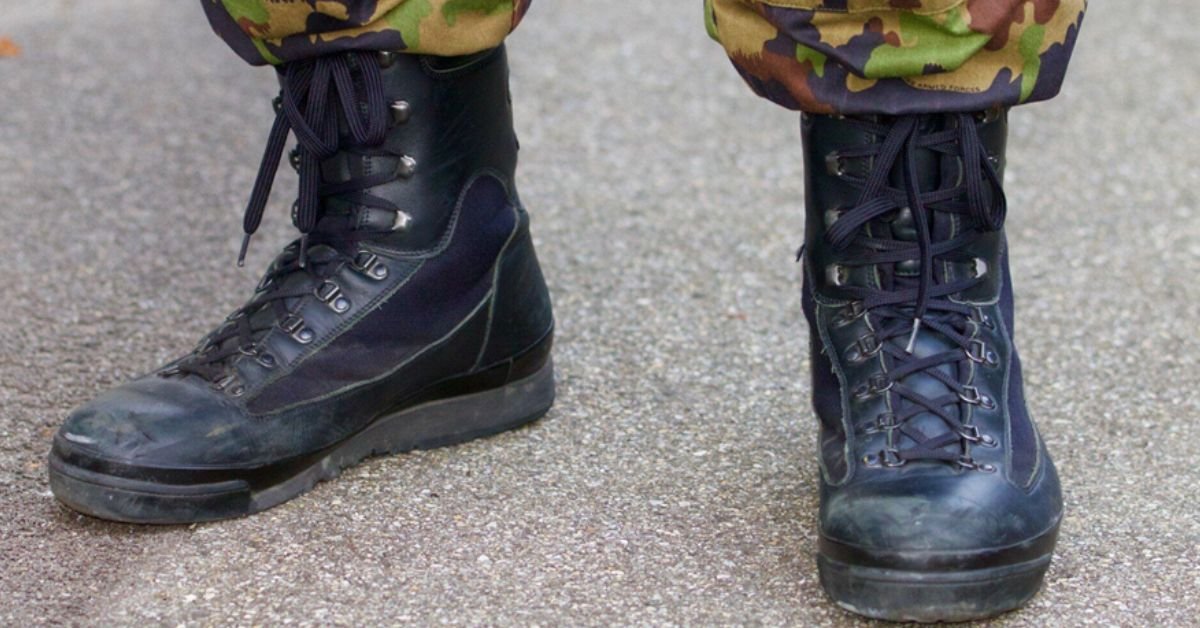General
How To Retain What You Read: Proven Tips For Better Memory

How To Retain What You Read, self-improvement, and personal growth. Whether you’re reading for education, work, or leisure, retaining what you’ve read is crucial for making the most of your time and effort. But how can you remember everything you read? It’s not just about reading faster or more often; it’s about retaining information effectively. In this article, we’ll explore proven techniques to improve your reading retention and boost your memory.
TRENDING
VandyWorks.com: Leading The Way In Business Solutions
Understanding Why Retention Is Challenging
Before diving into strategies, it’s important to understand why retaining what we read can be difficult. There are several factors that contribute to poor retention:
- Information Overload: In today’s digital age, we’re bombarded with vast amounts of information daily. Our brains often struggle to process and retain everything we encounter.
- Lack of Focus: Distractions can pull us away from the text, making it harder to concentrate and commit the material to memory.
- Passive Reading: Simply reading words without engaging with the content doesn’t promote retention. Active involvement is necessary for better memory.
- Cognitive Overload: If the material is too dense or complex, it can overwhelm the brain’s ability to store and recall the information.
To overcome these challenges, you’ll need a combination of techniques and habits that engage your brain, reinforce your learning, and make the material easier to retain. Here are some practical and effective strategies to help you retain what you read.
Active Reading: Engage With The Material
One of the most effective ways to improve memory retention is through active reading. Active reading involves engaging with the text rather than passively absorbing it. Here’s how you can do it:
- Highlight Key Points: Mark or underline important ideas, concepts, or sections that stand out. This helps you focus on the most important parts of the material.
- Take Notes: Writing down key points in your own words forces you to process the information actively. This helps reinforce the material in your memory.
- Ask Questions: While reading, ask yourself questions about the material. Why is this important? How does it connect to what I already know? What are the implications of this information?
- Summarize as You Go: Periodically stop and summarize what you’ve read so far in your own words. This reinforces the key ideas and improves recall.
By being actively involved in the reading process, you create stronger neural connections that make it easier to remember what you’ve read.
Break It Down Into Manageable Sections
Trying to read an entire book or article in one sitting can be overwhelming, especially if the material is dense or complex. Breaking down your reading into smaller sections makes it more digestible and helps you retain information more effectively.
- Chunk Information: Divide the material into smaller parts, such as chapters, sections, or paragraphs. Focus on understanding one chunk before moving on to the next.
- Set Time Limits: Decide in advance how much time you will dedicate to reading. For example, read for 30 minutes, then take a break. This prevents mental fatigue and helps maintain focus.
- Take Breaks: After reading a section, take a short break to allow your brain to process the information. This also prevents overload and improves long-term retention.
Breaking your reading into chunks allows your brain to absorb the material in a more structured way, enhancing memory retention.
Use Mnemonics And Memory Techniques
Mnemonic devices and memory techniques can help you retain information by associating it with something easier to remember. Some popular techniques include:
- Acronyms: Create acronyms using the first letters of key concepts or ideas. For example, to remember a list of items, create a word from their initials.
- Visualization: Create mental images of the concepts you’re reading about. The more vivid and unique the images, the easier they are to recall.
- Storytelling: Turn the information into a story or narrative. Humans have a natural affinity for stories, and this technique helps make complex information easier to remember.
- The Method of Loci: Also known as the memory palace technique, this involves associating pieces of information with physical locations or landmarks in your mind.
Using these memory-boosting strategies makes it easier for your brain to store and recall information from your reading.
Review And Repetition: Reinforce Your Memory
One of the most effective ways to retain what you read is through repetition and review. The more you encounter and reinforce the information, the stronger the neural connections become, making it easier to remember.
- Spaced Repetition: This technique involves reviewing material at increasing intervals over time. For example, review the material after one day, then after a week, and again after a month. This method helps consolidate information into long-term memory.
- Regular Reviews: Set aside time each week to review your notes and key takeaways from the books, articles, or documents you’ve read. The more often you review, the better the retention.
- Active Recall: Instead of passively rereading the material, try to recall the information from memory. Quiz yourself or use flashcards to test your understanding.
Repetition and review are essential for transferring information from short-term to long-term memory.
Stay Organized And Create A Reading Schedule
Staying organized is key to retaining what you read. When you read with a clear goal and structure, it becomes easier to remember the material.
- Create a Reading Schedule: Set specific times each day or week to read. Consistency helps improve focus and retention.
- Track Your Progress: Keep track of the books and articles you’ve read, and make notes of key takeaways. This helps solidify your learning.
- Keep a Reading Journal: Record your thoughts, insights, and reflections after each reading session. Writing down what you learned reinforces memory retention.
Having a structured approach to your reading helps keep the information organized and easier to recall later.
Apply What You’ve Learned
The best way to retain what you read is by applying the knowledge. When you actively use new information in real-world scenarios, it cements the material in your memory.
- Teach Someone Else: Explaining the material to someone else forces you to understand it deeply and reinforces your own memory.
- Implement Knowledge: Use what you’ve learned in your personal or professional life. For example, if you’re reading about time management, apply the techniques to your own schedule.
- Discuss With Others: Participate in book clubs, discussion groups, or online forums. Engaging in discussions about the material helps reinforce your understanding and retention.
Applying the material makes it much more likely that you will remember it over the long term.
Take Care Of Your Brain: Healthy Lifestyle Habits
Your ability to retain what you read is also influenced by the health of your brain and body. Adopting certain lifestyle habits can improve memory retention.
- Get Enough Sleep: Sleep is crucial for memory consolidation. Aim for 7-9 hours of quality sleep each night to help your brain process and store new information.
- Exercise Regularly: Physical activity increases blood flow to the brain and promotes neurogenesis (the growth of new brain cells), which can improve memory.
- Eat a Brain-Healthy Diet: Foods rich in antioxidants, omega-3 fatty acids, and vitamins can boost cognitive function and memory. Incorporate leafy greens, berries, fish, and nuts into your diet.
- Stay Hydrated: Dehydration can negatively affect cognitive function. Drink plenty of water throughout the day to keep your brain functioning at its best.
A healthy brain is a key factor in improving memory and retention.
Conclusion
Retaining what you read isn’t about speed or volume; it’s about quality and engagement. By applying the right techniques, breaking down the material, and reinforcing what you’ve learned, you can significantly improve your reading retention. Whether you’re reading for work, study, or leisure, these strategies can help you get the most out of every reading experience.
ALSO READ: Starfield PS5 Gameplay: Explore The Cosmos In Stunning Detail
FAQs
What is the best way to retain what I read?
The best way to retain what you read is to engage in active reading. This involves taking notes, summarizing key points, asking questions, and reviewing the material regularly. Additionally, using mnemonic devices, breaking down the material into manageable sections, and applying what you’ve learned can significantly improve memory retention.
How can I stay focused while reading?
To stay focused while reading, eliminate distractions, set specific reading goals, and take regular breaks. Reading in a quiet, comfortable space and using techniques like the Pomodoro Technique (reading for 25 minutes, followed by a 5-minute break) can help maintain focus and improve retention.
Does sleep really affect my ability to retain information?
Yes, sleep plays a critical role in memory consolidation. During sleep, your brain processes and stores the information you’ve learned throughout the day. Aim for 7-9 hours of quality sleep each night to optimize your memory and learning abilities.
How often should I review material to improve retention?
Using spaced repetition, review the material at increasing intervals—after one day, one week, and then one month. Regular reviews reinforce the material in your long-term memory and help you retain it more effectively.
Can exercise improve my memory retention?
Yes, regular physical exercise has been shown to enhance cognitive function and memory. Exercise increases blood flow to the brain, promotes neurogenesis (the creation of new brain cells), and helps keep your brain healthy, which ultimately improves memory retention.
General
Key Features to Look for in Tactical Footwear

Ever wonder what makes tactical footwear stand out from the rest? It’s not just how they look, it’s the feeling you get the moment you put them on. There’s something about the way they move with you that just clicks.
Tactical footwear isn’t just another pair of boots. It’s gear that speaks to purpose, strength, and control. Once you try them, there’s no going back.
In this blog, we will tackle the key features to look for in tactical footwear.
Advanced Traction for Maximum Grip in Rugged Terrain
Tactical footwear must have great traction. A good grip helps you move safely over rough ground. You need military boots that can handle dirt, mud, and rocks.
Look for soles with deep lugs. They can provide extra grip on uneven surfaces. This feature helps prevent slips and falls during your adventures.
Some tactical shoes use special rubber compounds. These materials offer better traction in wet conditions. This is crucial for staying sure-footed, even in rain or snow.
Reinforced Construction for Long-Term Durability
Durability should be a priority when choosing tactical footwear. Military boots need to withstand heavy use in challenging environments. Look for features like double stitching and strong seams.
High-quality materials enhance the longevity of police boots. Leather and synthetic options are popular choices among users. These materials resist wear and tear longer than cheaper alternatives.
Additionally, reinforced toes can protect against impact. This feature is essential for those who work in tough conditions. Choosing robust tactical shoes will ensure your footwear lasts longer.
All-Day Comfort with Ergonomic Insoles
Comfort is critical for anyone wearing tactical footwear. You may be on your feet for long hours. Ergonomic insoles provide support and cushioning when walking or standing.
Look for shoes that contain memory foam. This material can mold to the shape of your feet. It helps reduce tiredness and keeps you comfortable throughout the day.
Good support helps you perform at your best. Tactical shoes with arch support can prevent foot problems. This means you can focus on your tasks without distractions.
Waterproofing and Moisture-Wicking Capabilities
Waterproof footwear is essential for various conditions. Wet feet can lead to discomfort and blisters. Tactical footwear should keep your feet dry in rain and puddles.
Look for shoes with waterproof membranes. These barriers block water while allowing sweat to escape. This keeps your feet dry and comfortable, even during intense activity.
Moisture-wicking materials also help maintain shoe freshness. They prevent moisture buildup that can cause smelly shoes. Choosing the right tactical footprint can lead to a better overall experience.
Lightweight Design Without Compromising Protection
Weight is an important factor in tactical footwear. Heavy boots can tire you out quickly. You need lightweight shoes that allow you to move easily.
Shoes made from light materials can offer stability. This means you can stay protected without feeling weighed down. A good combination keeps you light on your feet and ready for action.
Durability does not have to be sacrificed for weight. Many modern tactical shoes offer a blend of both. Choose a pair that balances protection with a lightweight design.
Ankle Support to Prevent Injuries in Rough Conditions
Ankle injuries can occur easily in rugged environments. Tactical footwear should provide solid support around the ankle. This helps reduce the risk of twisting or rolling your ankle.
Look for boots that cover the ankle area. High-top designs can offer additional support. The design keeps your feet stable during tough movements.
Good ankle support can help when carrying heavy gear. Shoes with sturdy construction will keep you safe. Protecting your ankles should always be a key feature in tactical footwear.
Slip-Resistant Outsoles for Wet and Oily Surfaces
Slip-resistant outsoles help keep your feet steady and safe. They are made to grip the ground, even when it’s wet or oily. This means fewer slips and more control wherever you go.
The outsoles are great for tricky spots like muddy trails or slick floors. They give you the confidence to move without worry. A strong grip matters when every step counts.
If you’re looking for a quality choice, Altberg Boots UK offers a dependable grip with comfort. Their designs focus on safety and support. It’s a smart choice for staying sure-footed in any condition.
Breathable Materials to Reduce Overheating
Breathable materials are vital in tactical footwear. They allow air to circulate inside the shoe. This helps keep your feet cool during hot weather.
Look for mesh panels as part of the design. These panels enhance airflow while providing support. Breathability can improve your overall comfort on long days.
Wearing shoes with good ventilation can prevent moisture buildup. This means fewer blisters and a fresher feel. Keeping your feet dry is important for long hours of wear.
Shock Absorption for High-Impact Movements
Shock absorption is a must for those on the move. Tactical footwear should protect your feet from impact. Good shoes will help reduce stress on your joints.
Look for shoes with cushioning technology. These features absorb shock during jumps and landings. This makes a big difference in comfort and performance.
When you wear shoes with proper shock absorption, your feet will feel better. This allows you to focus on your task without distractions. It can enhance productivity throughout your day.
Quick-Lace Systems for a Fast and Secure Fit
A quick-lace system can save you time. This allows for easy adjustments to your footwear. This feature helps you get ready swiftly when every moment counts.
Look for tactical footwear with laces that hold tight. Some systems use elastic materials to grip your foot securely. This means you won’t have to worry about them loosening during activities.
Choosing shoes with a quick-lace system can improve efficiency. You can focus on your tasks without constant adjustments. It makes your overall experience with tactical footwear much smoother.
Why Choosing the Right Tactical Footwear Matters
Tactical footwear stands apart with its purpose-driven design and dependable feel. It’s made for people who need more than just regular shoes. Every detail is built for serious use and real-world demands.
Once you wear the right pair, you’ll feel the difference with every step. Let your gear match your grit. Explore your options today and step into something better.
General
Master Retro Bowl 3KH0: Top Strategies For Winning Big
General
Master Hearthstone With Detailed Stats From HearthStats.net
-

 Entertainment11 months ago
Entertainment11 months agoSandra Orlow: Exploring the Life and Legacy of a Cultural Icon
-

 General7 months ago
General7 months agoBaby Alien Fan Bus: Watch Parts 2 & 3 on Twitter, Reddit!
-

 General7 months ago
General7 months agoDiana Nyad & Bart Springtime: A Swim to Success
-

 Business12 months ago
Business12 months agoTex9.Net Crypto: Fast, Secure International Money Transfers with Competitive Rates
-

 Business12 months ago
Business12 months agoWhat is O Farming: How to Make Money Online and Its Start-Up Benefits
-

 Business11 months ago
Business11 months agoSnapchat Planets: Exploring Your Streak Universe
-

 General10 months ago
General10 months agoDeeper Dive into myfavouriteplaces. org:// blog
-

 Business12 months ago
Business12 months agoFintechZoom Apple Stock: Real-Time Insights and Expert Analysis


